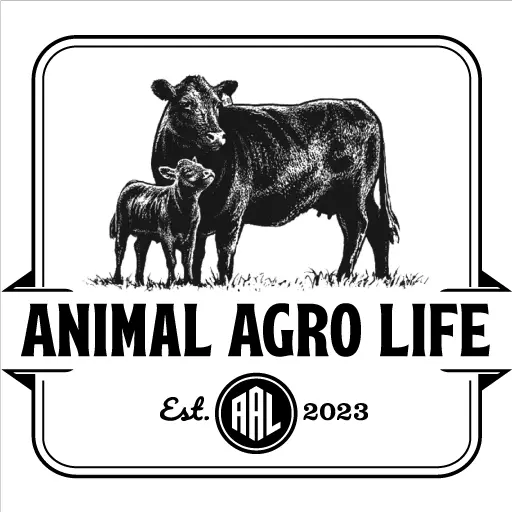Explore the world of pig breeds, the types of pigs and their unique features, roles in agriculture, and more. Ideal for farmers, chefs, or anyone interested in livestock.
jump to the topic
Understanding the various pig breeds available is crucial to making an informed decision on which breed to rear. Some breeds are ideal for ham and bacon, while others are used for medical experiments. Some breeds are rare, while others are pretty common.
This comprehensive article will introduce you to various domestic pig breeds, complete with pictures and distinctive characteristics. Pigs are a fascinating and diverse animal group in livestock, with each breed offering unique features and playing a significant role in agriculture and culinary traditions worldwide.
This article will delve into the top five most prominent Types of Pigs pig breeds, highlighting their notable contributions and distinctive traits. So sit back, relax, and explore the world of pig breeds together!
The Yorkshire Pig
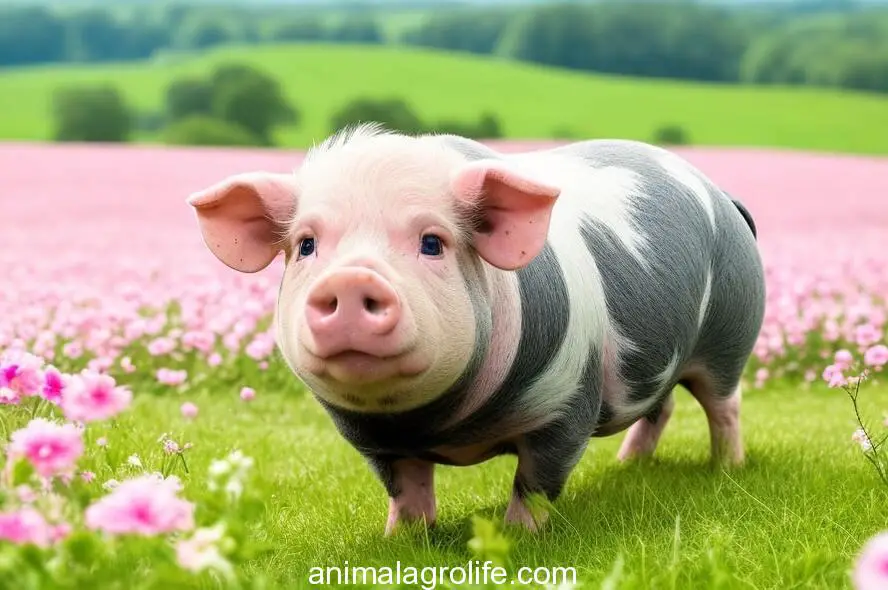
Here are some interesting facts about the Yorkshire pig, also known as the Large White:
- The Yorkshire pig is one of the most famous pig breeds worldwide.
- It was developed in the 18th century by breeding native white pigs from North England with more miniature, fatter white Chinese pigs.
- Pigs may have been the first animals to be domesticated, even before cats and dogs.
- Paintings and carvings of pigs have been found that date back over 25,000 years.
- The Chinese began domesticating pigs around 7,000 years ago.
- Pigs have played an essential role in human culture.
- William the Conqueror, who became king of England in 1066, passed a law that anyone who shot a wild boar would lose their eyes—quite a harsh punishment!
The Hampshire Pig
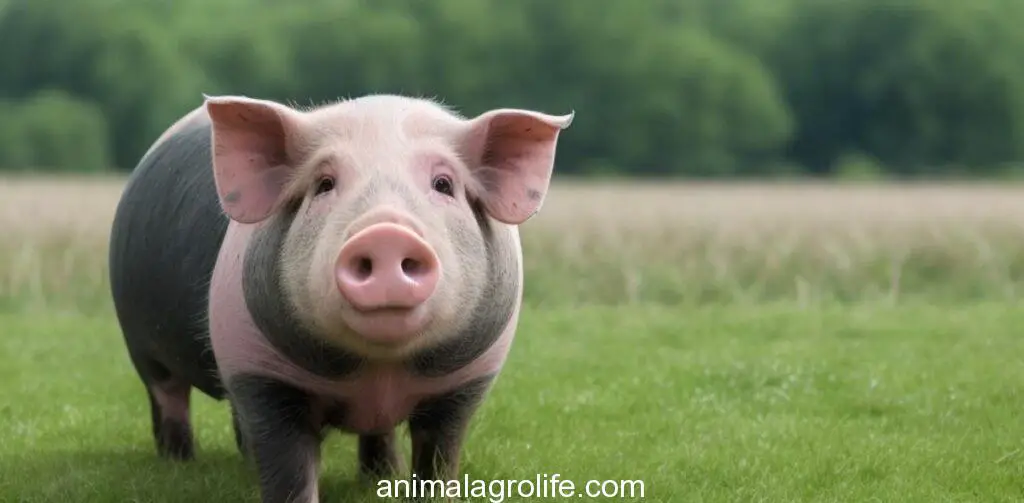
Here’s a list of facts about the Hampshire breed of pig:
- The Hampshire breed was developed in the United States in the early 19th century.
- The breed was created by breeding the Wessex Saddleback with other imported varieties from England.
- Hampshires were initially quite numerous in Scotland, Northumberland, and other counties bordering Scotland.
- Despite criticism for their large size, Hampshires were admired for their hardy vigor, foraging ability, prolificacy, and outstanding carcass qualities.
- In the late 20th century, Hampshire became one of the predominant pig breeds in the US.
- The Hampshire is still regarded by many in the commercial pig production industry as the best terminal sire breed for all purposes.
The Duroc Pig
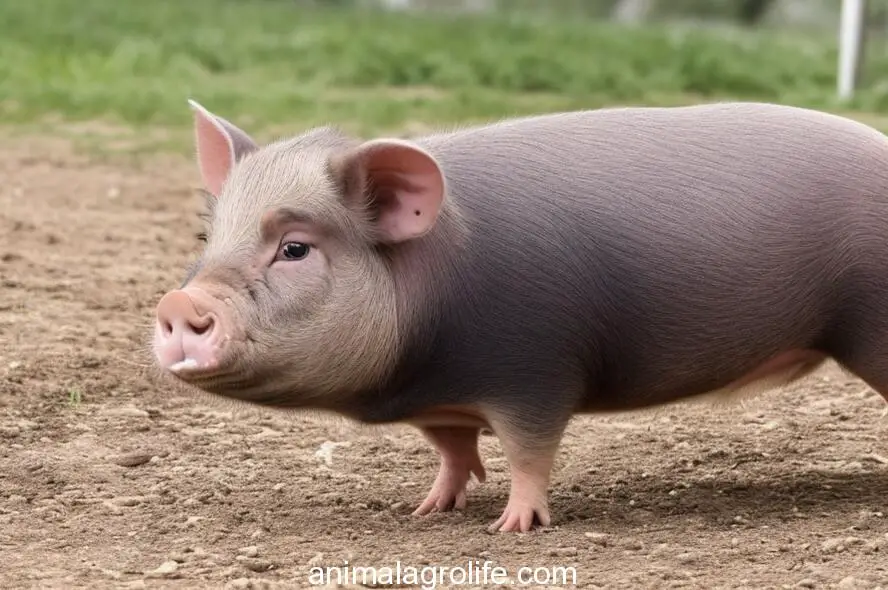
Here are some key facts about the Duroc pig:
- The breed was developed in the United States between 1822 and 1877 by crossing the Old Duroc pig of New York with the Red Jersey pig of New Jersey.
- Originally called the Duroc-Jersey, the breed was well-suited for feeding in the United States Corn Belt.
- By the 1930s, it had become the predominant breed in the United States, a distinction it held intermittently throughout the century.
- The Duroc pig is known for its tenacity in looking after its young and docility between times, making it an ideal candidate for an outdoor pig as a dam or sire line.
- Its juiciness and heavy muscling make it suitable for anything from light pork to heavy hog production.
- Duroc pork is known for its marbling, which enhances its flavor and tenderness, making it a popular choice for premium pork products.
- The breed is highly regarded for its fast growth and efficient feed conversion.
The Berkshire Pig
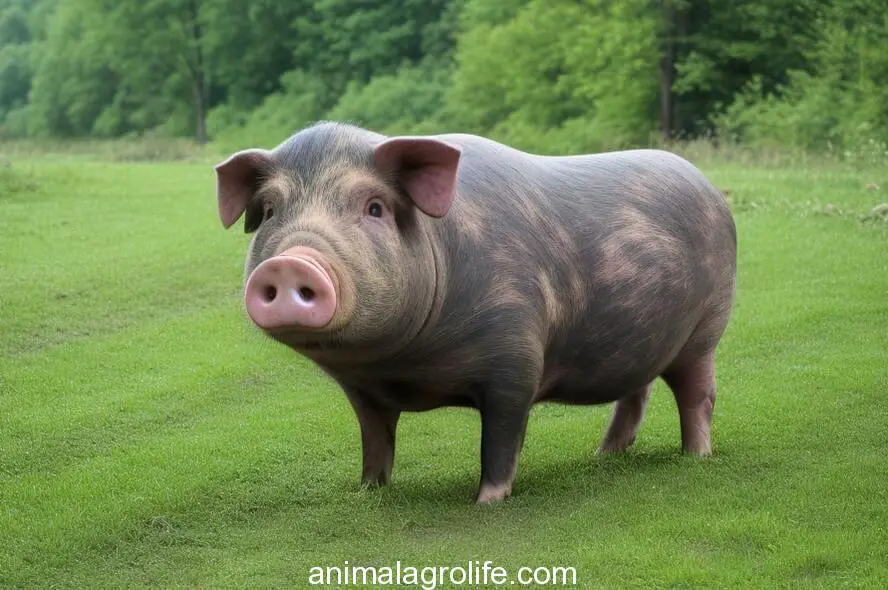
Here is a list of facts about the Berkshire pig breed:
- The Berkshire breed originated in England.
- In the early 19th century, “Berkshire” became associated with improved pig strains of different origins and types.
- The primary stock was refined with a cross of Siamese and Chinese blood, resulting in the distinct color pattern we see today and more efficient gains.
- As far as recorded livestock history shows, the Berkshire breed has remained pure for over 200 years.
- Many breeders have developed specialized markets for Berkshire pig meat.
- Berkshire breeding stock is in demand overseas, particularly in Japan, where it is marketed as Black Pork at a premium price.
- Japanese buyers consider Berkshires from Britain to have the best taste and flavor.
- Six boars have been imported from Australia and New Zealand in the past fifty years to broaden the breed’s genetic base.
- Currently, there are six male and nine female bloodlines available to breeders.
The Tamworth Pig
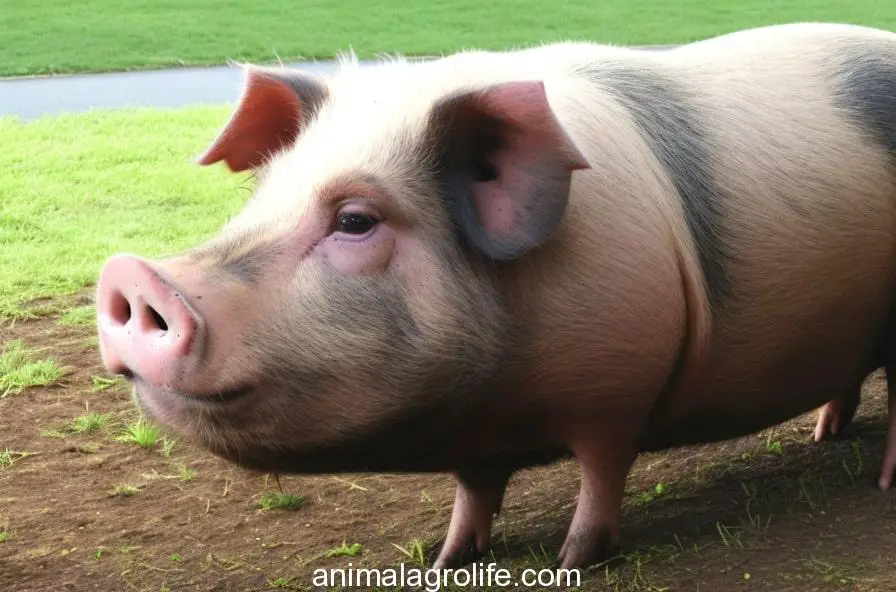
Here is a list of key information about the Tamworth pig breed:
- The Tamworth originated in Ireland as “The Irish Grazer” and was imported to England by Sir Robert Peel in the early 1800s.
- Tamworths have a distinctive golden-red coat that is fine and free of black hairs, and their skin should be flesh-colored and free from coarseness, wrinkles, or black spots.
- Tamworths have a slightly dished face and wide ears that are finely fringed and slightly inclined.
- They are excellent mothers, very milky, docile, and protective, and are a hardy breed that can survive in rough pasture or meadowland.
- Tamworths are particularly resistant to sunburn but can be susceptible to it when molting, so they need access to mud and suitable housing to protect their skin and keep them cool.
- Tamworths love being active and have good dispositions, making them a social breed that enjoys being around other pigs.
- They are a docile breed, making them an excellent choice for beginners.
- Tamworth pigs are one of the oldest pig breeds in the world and are often raised in free-range environments.
- They are prized for their hardiness and adaptability and are worth considering if you want to keep pigs.
Choosing the Right Pig Breed
When choosing the right Types of Pigs pig breed, there are several factors to consider. One of the most important factors is the purpose of raising the pigs. Are you raising them for meat production, breeding, or as pets? Different breeds have different characteristics that make them more suitable for specific purposes.
Another factor to consider is the climate in your area. Some pig breeds are better suited for cold climates, while others can thrive in warmer environments. Choosing a breed that can withstand the weather conditions in your area is essential.
You should also consider the size of the breed. Some breeds are smaller and more manageable, while others can grow large. If you have limited space or are new to raising pigs, you may want to consider a smaller breed.
Finally, you should consider the temperament of the breed. Some breeds are more docile and easy to handle, while others can be more aggressive. If you are new to raising pigs or plan to have children around them, choosing a breed known for being gentle and easy to handle is essential.
Choosing the right pig breed requires careful research and consideration of your needs and circumstances. With the right breed, you can enjoy the benefits of raising pigs for years.
3 types of pigs:
In Thailand, pig breeding has evolved to meet the demands of both breeders and consumers. As a result, numerous breeds of pigs have varying appearances and characteristics. These breeds can be categorized into three types based on the shape and quality of their meat.
The Lard type
There is a unique breed of pig that has a short and plump body with a thick layer of fat and red meat. However, this breed is not as popular among consumers because they prefer vegetable oil over lard. Interestingly, this breed is native to China’s Hainanese region and is known for its high-quality lard.
The meat type
A kind of pig finds itself nestled between the lard and bacon types. These pigs have a lengthier body than their lard-type counterparts, with prominent shoulders and thick thighs. This particular breed is the result of careful breeding and selection, focusing on increasing the amount of red meat while decreasing the amount of fat present. Examples of this type of pig include the Duroc and Hampshire breeds.
The bacon type
This particular breed of pig boasts a large, slender physique with a long, sturdy frame, tall legs, and petite hips. Its bacon variety offers marbled pork that is perfect for crafting mouth-watering bacon. Some examples of these breeds include the Landrace and Largewhite varieties.
17 types of pigs
Certainly! Here’s a table listing 17 different types of pigs breeds:
| Breed Name | Origin | Characteristics |
|---|---|---|
| Duroc | United States | Reddish-brown, muscular, fast-growing |
| Yorkshire | England | White, large, excellent mothering ability |
| Hampshire | United States | Black with a white belt, meaty |
| Berkshire | England | Black with white points, flavorful meat |
| Tamworth | United Kingdom | Reddish-brown, lean, active |
| Gloucestershire Old Spot | England | White with black spots, hardy |
| Landrace | Denmark | White, long body, prolific |
| Pietrain | Belgium | White with black spots, lean carcass |
| Large Black | England | Black, docile, excellent foraging |
| Chester White | United States | Black with a white belt, muscular |
| Poland China | United States | Black with white points, versatile |
| Hampshire | United States | Black with white belt, muscular |
| Mangalitsa | Hungary | Curly-haired, fatty meat, hardy |
| Wessex Saddleback | England | Black with white saddle, good foragers |
| Mulefoot | United States | Black, solid hooves, rare |
| Meishan | China | Wrinkled skin, fatty meat, small |
| Red Wattle | United States | Red with wattles, flavorful meat |
Pigs in Agriculture
Pigs are essential in agriculture for their ability to convert low-cost feed into high-quality protein. They play a crucial role in sustainable farming practices, helping recycle food waste and enrich soil.
FINAL THOUGHTS
pigs are a diverse and valuable part of our agricultural and culinary heritage. Understanding the different Types of Pigs and their unique characteristics allows us to appreciate their contributions to our society. Whether you’re a farmer, a chef, or simply a lover of good food, pigs play an essential role in our lives.
Resources:
- List of pig breeds:https://en.wikipedia.org/wiki/List_of_pig_breeds
- Provides an extensive list of pig breeds with information about their origin, classification, and characteristics.
- Includes links to breed-specific websites and resources.
- Highlights the eight most common and commercially important pig breeds in the United States.
- Offers information about their physical features, temperaments, and production qualities.
